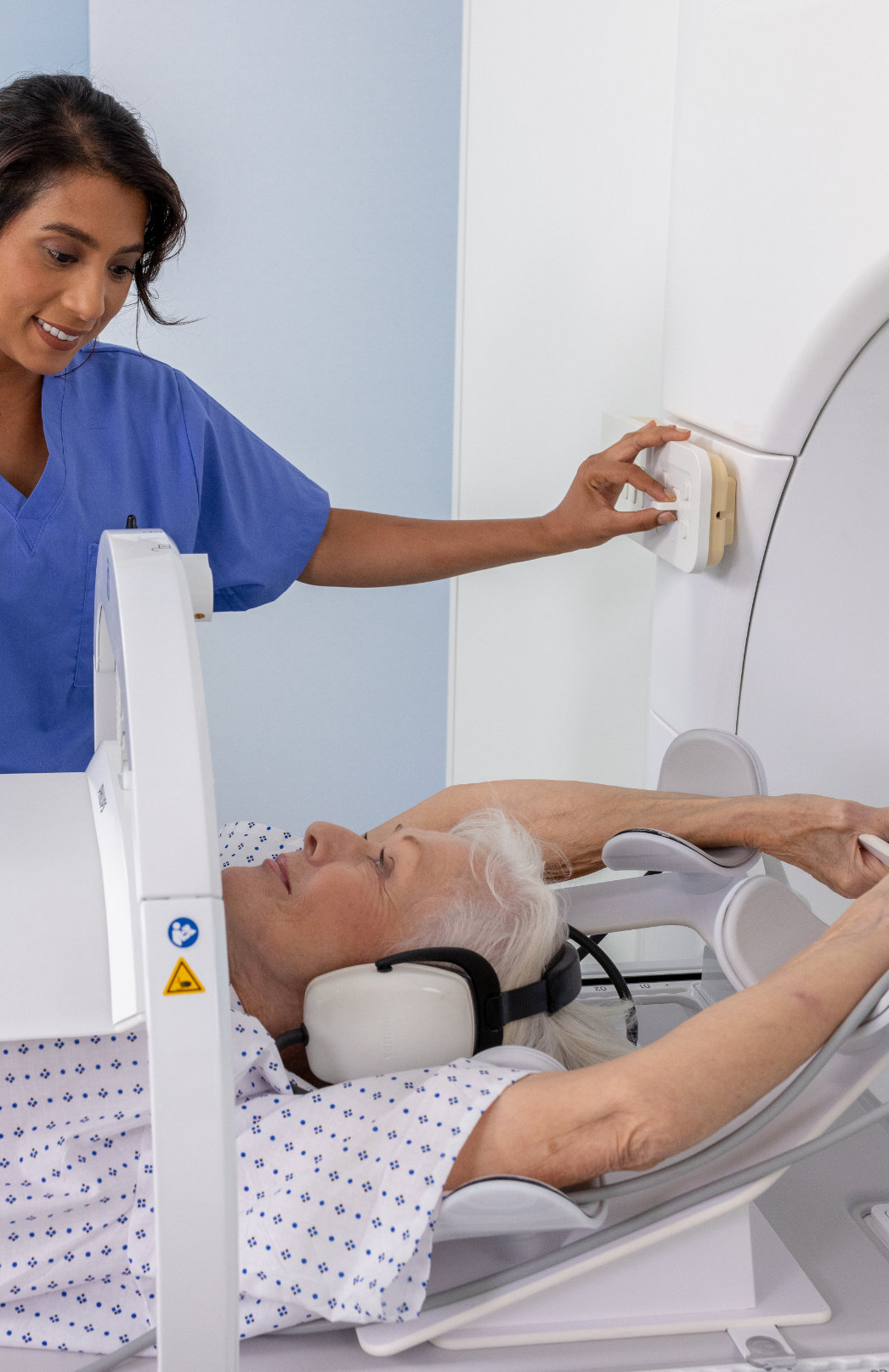
Moving Beyond Static Snapshots
Adaptive Radiotherapy in Clinical Practice
Adaptive Radiotherapy transforms radiation treatment from a static plan into a dynamic, patient-centered process. By continuously adjusting therapy to account for tumor changes, patient anatomy, and organ motion, Adaptive Radiotherapy helps target tumors more precisely while minimizing exposure to healthy tissue.
Imaging and Assessment
The workflow begins with high-quality imaging—CT, CBCT, or MRI—captured before or between treatment sessions. These images reveal gradual tumor changes and random organ motion, helping clinicians determine whether the original plan remains optimal or needs adaption.
Compare Imaging TechnologiesPlan Adaption:
Online vs. Offline
Adaptive workflows can be divided into offline and online:
Online Adaptive
Radiotherapy
Online Adaptive Radiotherapy happens with the patient on the treatment table. Real-time imaging and advanced algorithms generate an updated treatment plan within minutes. While precise patient placement remains important, the system automatically accounts for positional shifts of the internal anatomy and changes in the shape and size of the tumor, ensuring accurate dosing. Localization images guide planning and contouring, and real-time, on-board imaging confirms the tumor is correctly targeted before treatment.
Offline Adaptive Radiotherapy
Offline Adaptive Radiotherapy takes place between treatment sessions. Clinicians use images captured during prior sessions to adjust plans for subsequent treatments. This approach is particularly effective for tumors that change gradually over time, such as head and neck cancers, and offers flexibility in scheduling and resource allocation.
Automation and AI Integration
Modern Adaptive Radiotherapy workflows increasingly rely on AI-driven automation. Algorithms can automatically contour tumors and critical structures, assess plan quality, and suggest adjustments. This reduces planning time, improves consistency, and enables clinicians to focus on clinical decision-making rather than manual calculations.
Hospital Team Dynamics in Adaptive Radiotherapy Workflows
Implementing Adaptive Radiotherapy requires coordination across multiple roles: radiation oncologists, medical physicists, dosimetrists, and radiation therapists. Each team member contributes to imaging acquisition, plan evaluation, and treatment delivery. When integrated smoothly, Adaptive Radiotherapy workflows can enhance clinical efficiency while maintaining the highest standards of safety and accuracy.
By examining each component, ranging from advanced imaging and adaptive treatment planning to AI-supported analysis and multidisciplinary collaboration, clinicians and administrators can gain a deeper understanding of how Adaptive Radiotherapy transforms conventional radiotherapy into a dynamic, patient-centered, and highly precise therapeutic approach.


